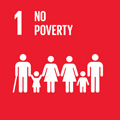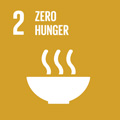- Docente: Lucia Corrain
- Credits: 6
- SSD: L-ART/04
- Language: Italian
- Teaching Mode: In-person learning (entirely or partially)
- Campus: Ravenna
- Corso: First cycle degree programme (L) in Cultural Heritage (cod. 9076)
-
from Nov 10, 2025 to Dec 15, 2025
Learning outcomes
The course provides a comparative approach to different methodologies of art criticism, through thematic paths that privilege the relationship between knowledge and protection, between art history, collecting and cultural history. By the end of the course the students will be in possession of the tools to orient themselves in the field of art history, also from the standpoint of the critical debate.
Course contents
One of the main approaches in the human sciences is to demonstrate how many contemporary issues have ancient roots and have already appeared in history at some point. In this respect, artistic representations are a valuable testing ground: they capture the essence of a phenomenon and, at the same time, generate new images. It is up to the analyst, with their trained eye, to re-actualise their contents more or less precisely, thereby giving the visual representation itself its specific relevance. Following an introductory methodological section, the course will address various topics, including the media used by art and the different meanings they convey. The focus will be on the life and effectiveness of the image in the context of the relationship between the past and the contemporary, or anachronism. One of the earliest examples of environmental art will also be examined.
Readings/Bibliography
For attending students:
Corrain, L., Una memoria infinita. Il ciclo di Constantin Brâncuși a Târgu Jiu, la casa Usher, Firenze 2023.
Schapiro Mayer, Per una semiotica del linguaggio visivo, a cura di Perini Giovanna, Meltemi, Roma 2002, pp. 92-119.
For non-attending students
In addition to the books indicated for attending students, non-attending students should also prepare Corrain, L., La pittura di mercato. La pittura di mercato. Il ‘parlar coperto’ nel ciclo Fugger di Vincenzo Campi, Mimesis, Milan 2018 (also available online).
Teaching methods
The lecturer's frontal lectures will be supplemented by a seminar component in which attendees will have the opportunity to participate actively by presenting a case study in the classroom according to the studied method.
Publications will be made available to serve as preparatory tools for the course and to help bridge any gaps for those with no prior experience of the discipline.
Students with disabilities or specific learning disorders (DSA) who require compensatory tools should inform the teacher so they can be referred to the relevant contact person to agree on the most appropriate measures.
PowerPoint presentations used during the lessons will be made available exclusively to attendees.
Assessment methods
The examination aims to verify the achievement of the following learning objectives: an in-depth knowledge of the topics and methodology covered in the lectures and set texts. The oral examination is marked in thirtieths. Students must bring the studied texts from the syllabus with them to the examination.
According to the University guidelines:
1. Students who demonstrate their ability to analyse texts in depth and place them within an overarching framework will be awarded marks of excellence. The expressive mastery employed during the interview will also be important.
2. Fair marks will be awarded for mostly mnemonic knowledge, an inability to analyse in depth, and a language that is correct but not always appropriate for the texts to be studied.
3. Superficial comprehension, poor analytical ability, and inadequate expression will lead to little more than adequate marks.
4. Deficiencies in form, inappropriate language and a lack of orientation within the bibliographical material to be studied in the programme will lead to negative assessments.
Teaching tools
Handouts and images will be available in IOL Online Teaching (https://iol.unibo.it).
Office hours
See the website of Lucia Corrain
SDGs




This teaching activity contributes to the achievement of the Sustainable Development Goals of the UN 2030 Agenda.
